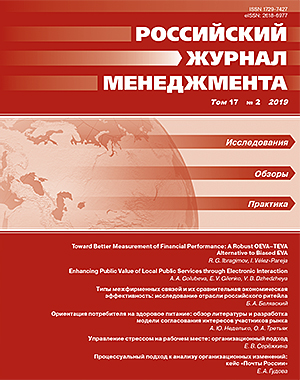Enhancing Public Value of Local Public Services through Electronic Interaction
DOI:
https://doi.org/10.21638/spbu18.2019.202Аннотация
Benefits from introducing electronic public services have been widely discussed in the academic literature. However, in recent years, research advocates a more broad approach integrating multiple indicators of social benefits. One of these approaches is associated with the concept of public value, which describes the overall value that the government creates for the society. In this research we theoretically illustrate and empirically evaluate the possibility to enhance public value of public services through the electronic interaction of citizens and authorities on a local (municipal) level. We use an example of online claim submission system on landscaping and public amenities issues. The paper is based on a survey among 150 elderly citizens of a district of St. Petersburg (Russia). Despite the fact that elderly citizens are actually willing to adopt the electronic way of communication with local authorities and even associate it with a higher level of comfort and transparency, the online interaction itself do not make them trust the authorities more or submit their claims more often. To increase the level of trust and enhance the actual public value, the authorities need to demonstrate some practical results of their activity. This paper elaborates the linkage between public value creation and public e-services implementation on a local level. We provide a theoretical framework for a more comprehensive understanding of public value enhancement through local public services.
Ключевые слова:
public e-services, public value, landscaping and public amenities, principal components analysis
Скачивания
Библиографические ссылки
REFERENCES
Загрузки
Опубликован
Как цитировать
Выпуск
Раздел
Лицензия
Статьи журнала «Российский журнал менеджмента» находятся в открытом доступе и распространяются в соответствии с условиями Лицензионного Договора с Санкт-Петербургским государственным университетом, который бесплатно предоставляет авторам неограниченное распространение и самостоятельное архивирование.





